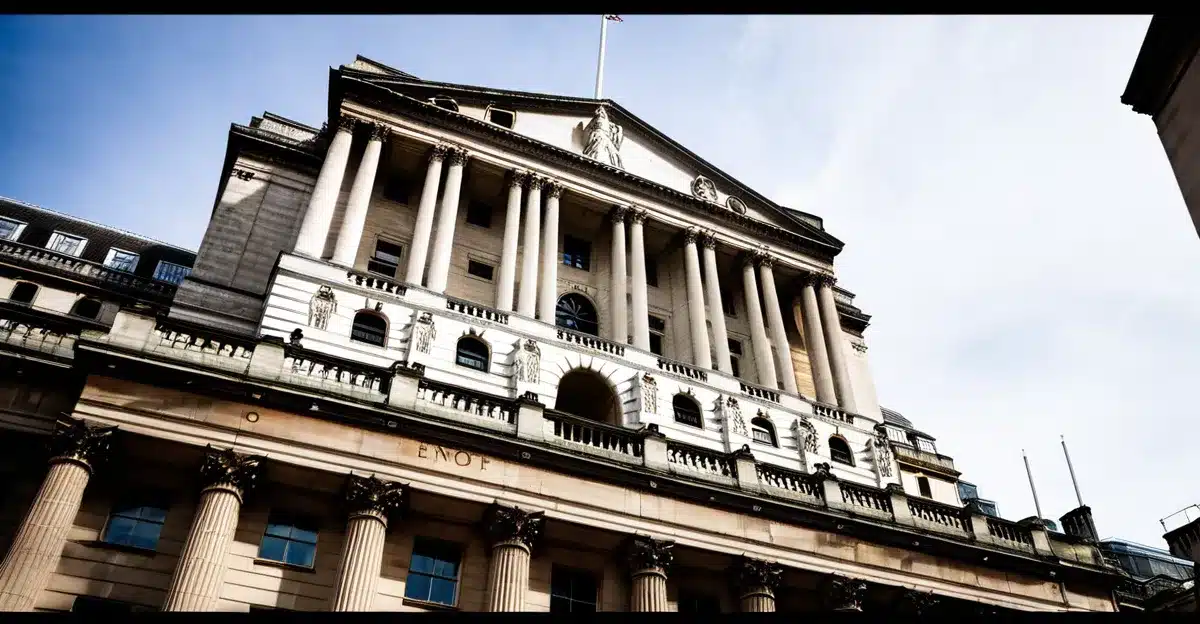The Bank of England’s Interest Rate and Its Immediate Economic Impact
The Bank of England base rate is the benchmark interest rate set by the central bank to influence the UK economy. It serves as a crucial lever within UK monetary policy, guiding borrowing and lending costs across financial institutions. When the Bank of England adjusts this rate, it directly impacts the cost of credit, influencing consumer spending and business investments.
Changes in the bank rate affect the economy by altering borrowing costs for mortgages, loans, and credit cards. An increase in the base rate typically raises these costs, discouraging excessive borrowing and slowing inflation. Conversely, a rate cut makes borrowing cheaper, encouraging spending and investment. Lenders respond to the base rate by adjusting their interest rates accordingly, creating a ripple effect that influences overall economic activity.
Also to read : How Will Rising Interest Rates Impact UK Homebuyers?
The immediate economic impact of a bank rate adjustment can be seen in financial markets and consumer behavior. Businesses may delay expansion plans if borrowing costs rise, while consumers might reduce discretionary spending. Exchange rates might also adjust quickly, as investors react to expected changes in currency value due to interest rate shifts. These responses demonstrate how tightly connected the Bank of England base rate is to the broader UK economy, making it a powerful tool in monetary policy.
Influence on Mortgage Rates and Borrowing Costs
Understanding how central bank policies shape your home financing
Have you seen this : How Do Economic Trends Impact Property Investment in the UK?
When central banks adjust their base rates, mortgage rates offered by UK banks typically follow suit. A rise in the central bank rate often leads to increased borrowing costs for home loans, as lenders pass on higher funding expenses. This directly impacts the affordability of borrowing for buyers, as monthly repayments can become more expensive, narrowing access to loans for some.
Buyers looking for home loans must weigh the consequences of rate changes carefully. For example, those with fixed-rate mortgages enjoy payment stability despite fluctuations, while variable-rate borrowers face adjustments tied to central bank decisions, affecting monthly costs unpredictably.
Remortgaging decisions are also influenced substantially by mortgage rate movements. Homeowners might consider switching deals to secure better terms, but rising rates could deter this if new borrowing costs exceed current payments. In essence, the central bank’s rate actions ripple through all aspects of borrowing, shaping buyer choices and financial planning for property acquisition and ongoing costs.
Understanding this dynamic empowers you to make informed decisions when evaluating fixed versus variable rate options or considering remortgaging, ensuring your home loan fits your financial comfort zone amid changing economic conditions.
Housing Demand and the UK Property Market
Interest rates exert a powerful influence on housing demand and the overall property market trends in the UK. When interest rates rise, borrowing costs increase, reducing affordability for many property buyers. This often triggers a slowdown in buyer activity, as mortgage payments become more expensive. Conversely, lower interest rates typically stimulate demand, making property financing cheaper and encouraging more purchases.
Historical data highlights how house prices have often responded to changes in interest rates. For example, periods of declining rates have coincided with surges in buyer interest and rising property values. In contrast, hikes in rates tend to temper market enthusiasm, leading to price stabilization or moderate declines. This dynamic illustrates the close connection between borrowing costs and market behaviour.
Investor behaviour also shifts with interest rate movements. In lower-rate environments, investors might increase property acquisitions, seeking better returns than low-yield savings or bonds. However, when rates climb, the relative attractiveness of property investment can diminish, curbing demand from this segment. Understanding these patterns is essential for anticipating market shifts and making informed decisions within the UK property market.
Case Studies and Recent Examples
Recent shifts in UK property price trends closely follow changes in the Bank of England’s base rate. For instance, after the last rate increase, data show a modest slowdown in price growth, reflecting buyers’ cautiousness amid rising mortgage costs. These effects become apparent within months, highlighting the sensitive relationship between interest rates and housing demand.
Analysis of official property market data reveals that while prices in some regions have plateaued, others continue to experience steady growth, influenced by local economic conditions and supply constraints. Expert commentary emphasizes that rate changes tend to affect market sentiment significantly, contributing to variations in transaction volumes and price inflation.
When compared to previous cycles, such as the one experienced between 2016 and 2019, the current property market displays a more muted reaction. This suggests buyers and sellers have adapted somewhat, factoring rate changes into their decisions earlier. However, the cycle’s overall trajectory still follows expected economic patterns, demonstrating the ongoing influence of monetary policy on UK property price trends.
Implications for Buyers and Property Investors
Navigating the property investment landscape requires careful financial planning and an understanding of both risks and opportunities. For home buyers and investors, fluctuating interest rates directly affect mortgage affordability, influencing decisions to enter or exit the market. High interest rates may reduce borrowing capacity, impacting short-term purchasing power, while lower rates can encourage market entry by reducing monthly repayments.
Property strategies should consider both immediate cash flow effects and long-term capital growth. Investors looking to acquire assets must evaluate whether rising rates will affect rental yields or property values, while home buyers must assess their budget flexibility amid market shifts.
Expert advice often emphasizes diversifying property strategies to mitigate risks associated with uncertain economic conditions. This might include locking in fixed-rate mortgages to avoid sudden interest rate increases or postponing purchases if projections predict higher rates ahead. Additionally, having contingency plans for market downturns is essential to sustain investments.
Understanding these dynamics helps maximize opportunities while reducing potential downsides. Whether buying a home or expanding a property portfolio, proactive financial planning and adapting to interest rate fluctuations are crucial steps in making informed property investment decisions.
How Robot Hoovers Navigate and Clean Efficiently
Small, smart, and self-reliant, robot hoovers rely on advanced technology to navigate your home with minimal human input. These devices use a combination of sensors, cameras, and sophisticated algorithms to map rooms and detect obstacles, enhancing cleaning efficiency notably.
Most robot hoovers employ laser guidance or infrared sensors to scan their environment. This input allows them to build a virtual floor plan for systematic cleaning—covering every accessible area without unnecessary repetition. When encountering furniture or other obstacles, the sensors trigger adaptive responses so the robot can change course or clean around edges carefully.
In addition, many models feature automatic dirt detection. This means the robot intensifies cleaning in dirtier spots by sensing debris concentration; crucial for homes with pets or high foot traffic. With precise localization, robot hoovers optimize battery use, returning for charging when necessary and resuming exactly where they stopped.
Understanding these functions clarifies why robot hoovers offer practical convenience. Their tech-driven navigation ensures thorough cleaning, saving time and effort while improving results in various floor types and layouts. Exploring specific features like obstacle detection and mapping can help you select a robot hoover perfectly suited for your cleaning needs.

